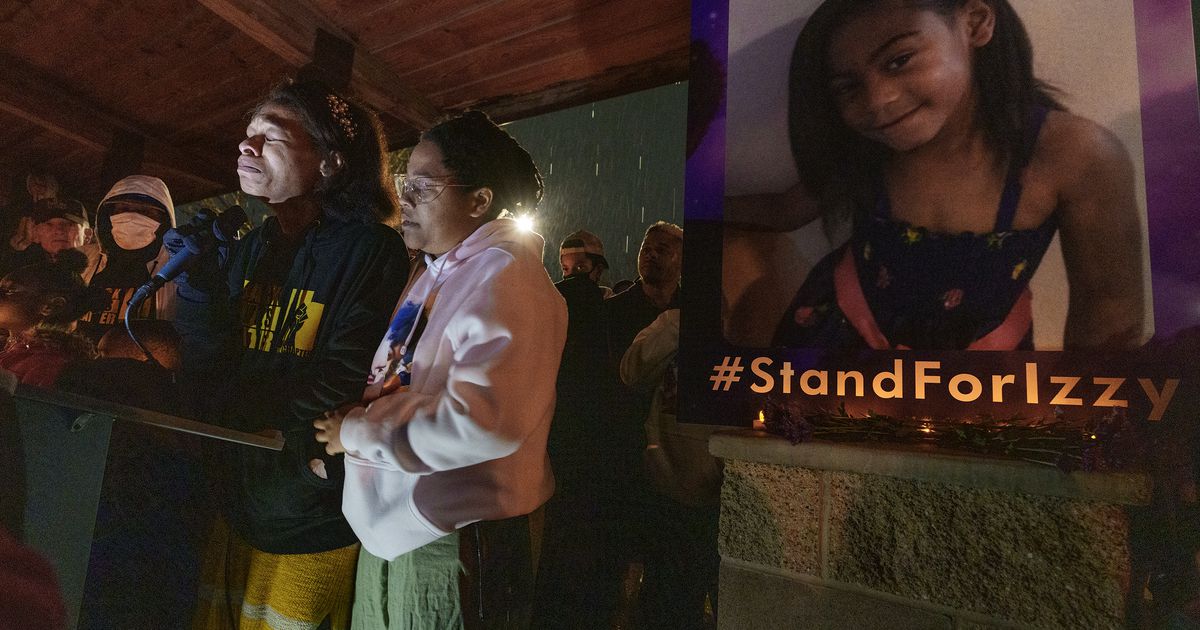
Editor’s note • This column mentions suicide. If you or people you know are at risk of self-harm, the National Suicide Prevention Lifeline provides 24-hour support at 1-800-273-8255.
It must end.
Damn it all to heaven and hell, it has to stop.
This abuse, this hate that is passed down from adults to kids based on race.
Who among us isn’t torn and broken by the tragic story of Izzy Tichenor, the 10-year-old girl in Davis County who died by suicide afterher mom says she was bullied by kids around her for being Black and autistic.
I am. You are. The governor is. Donovan Mitchell is. Every human with a caring heart is.
For the love of God, whether you believe in a deity or not, please, let’s make it stop.
We can do it.
It’s not some impossible task. It can be done.
Last year, I wrote a column — based on the expertise of many educators, psychologists, sociologists, child-development researchers, authors whom I interviewed years before for a piece published in the Los Angeles Times — about how it can be done.
(Francisco Kjolseth | The Salt Lake Tribune) Gordon Monson.
Let’s review it again. And again. And again. And again. And again.
Until we get it right.
Again. And again. And again.
Until there are no more tragedies — or any hints of them — like that of little Izzy.
Those experts said that children in this world come into it unadulterated, completely free of racial bias. Somewhere between ages 2 and 3, they begin to notice the differences between individuals of varying races and ethnicities — skin tones, hair textures, facial features.
“Children pick up on everything,” said one educator who was part of a multicultural committee. “They try to understand the world and their place in it. They are trying to make sense of their own individuality and the physical differences they observe between people.”
So, kids do notice those differences, heading toward a level of racial awareness. But they do not naturally assign values to them. Those attitudes — aimed at others or at themselves — come via outside influences, often adults who bump them in negative directions.
“Young children ask questions about racial differences,” the teacher said. “They pick up on the responses of adults and they pick up the values of those adults, including biases. They also are influenced by other kids and what they see on TV and in movies.”
Said another expert: “Hopefully, parents and teachers celebrate the differences. Hopefully, they’ll say, ‘Yes, we are all different. Isn’t that wonderful?’”
For white children, that means being exposed to positive influencers who do celebrate differences, and find them wonderful.
For Black kids and kids of other races, it means avoiding exposure to negative influencers who have not been successful in overcoming their own biases and, when that exposure cannot be dodged, learning how to ignore it.
That last part is not easy.
A professor of medical psychology told me that a child’s racial awareness “can be turbocharged by a negative incident.”
She said: “Such an incident can be devastating. I know of one nursery school child who was called a ‘chocolate bar’ by one of his peers. He broke into tears. … Unfortunately, if a child is somehow different, there’s a connotation that he is deficient. It’s a sad way to start your self-concept, feeling there is something wrong with you.”
Even in young children, this is a late stage where intervention must occur — intervention on the part of parents, teachers, school district officials, even other children who have benefited from advantageous influences.
It cannot be allowed to infect kids.
Researchers said youngsters hear negative words, meant to belittle them or others. They remember those expressions and pass them on, particularly if they go unchecked. “If [adults] don’t intervene,” said one expert, “they go on using them. Between the ages of 9 and 11, we have budding racists. Children are a product of their world. Racism begins at home” … and in schools and on playgrounds and in churches.
It can be halted.
“From an early age, white children are often invited to join in prejudice and discrimination,” another expert said. And Black kids are hurt by it.
These quotes were uttered to me some 30 years ago, and over the past couple of days, they made me think oh-so painfully about Izzy Tichenor, and the pain she was feeling.
Devastating.
As I’ve written before and will go on writing, there is hope for the future.
Our future.
Please let me repeat it. Up with hope.
“At 5 or 6, children can sense what is fair and what isn’t fair,” the expert said. “They can begin to be critical thinkers on cultural and racial issues.”
One enlightened teacher said: “[Kids] know they have their differences and that those differences make them unique. But they are the same. They are all people.”
We are all people.
Say it again. And again. And again. And again. And again.
White. Black. Brown. Red. Pick a color. Any color.
We are all people. Different, but the same.
What happened to Izzy Tichenor should never have happened. May the powers of an eternal God bless her soul, if you believe and roll that way. If you do or you don’t, there is this realization: We can do better, much better, down in this dirty terrestrial realm. We can stop the intergenerational transmission of bias and hate.
We can.
We must.
"story" - Google News
November 11, 2021 at 08:57PM
https://ift.tt/2YAD7eQ
Gordon Monson: Izzy's story shows Utah must stop racial bias and hate. Now. - Salt Lake Tribune
"story" - Google News
https://ift.tt/2YrOfIK
https://ift.tt/2xwebYA
Bagikan Berita Ini















0 Response to "Gordon Monson: Izzy's story shows Utah must stop racial bias and hate. Now. - Salt Lake Tribune"
Post a Comment